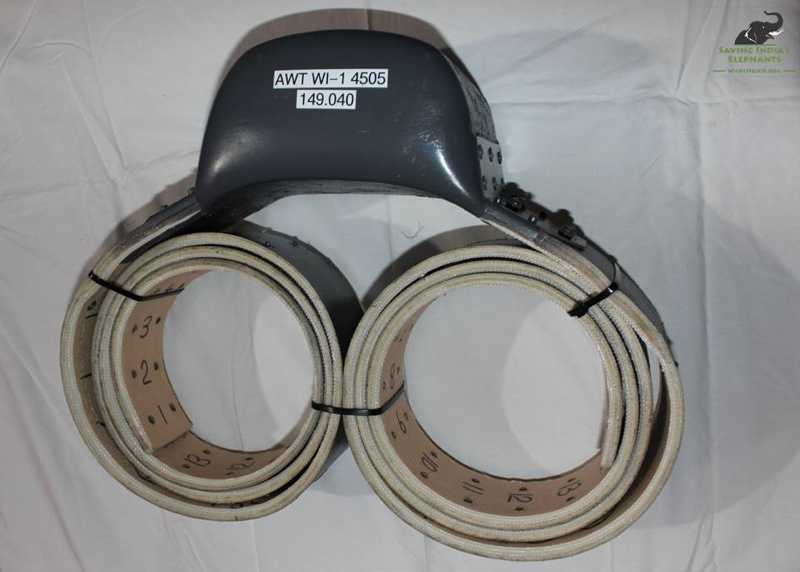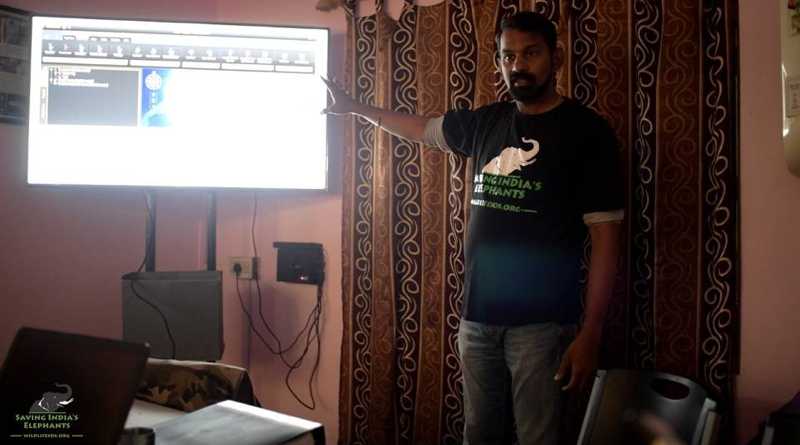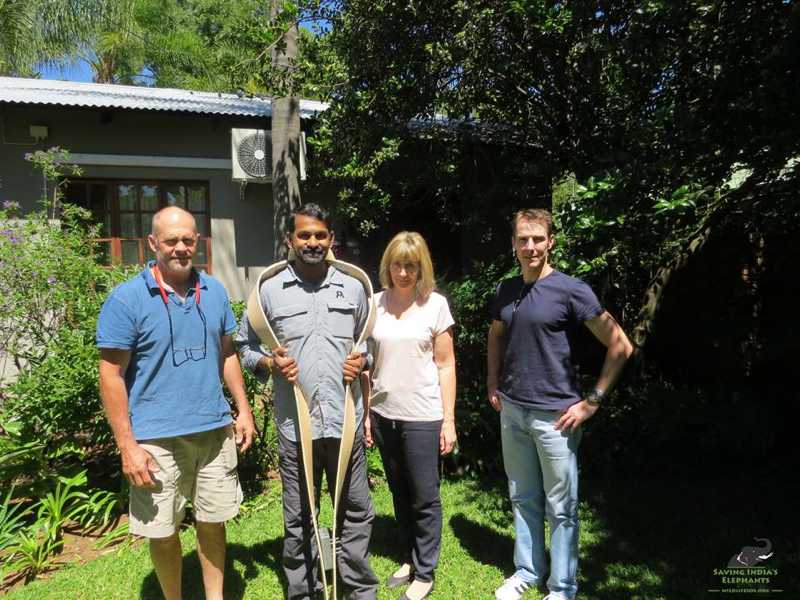As part of our ongoing human-elephant conflict mitigation project in the north Indian state of Chhattisgarh in collaboration with the state Forest Department, we plan on tracking the movements of one particular herd through radio telemetry, the first step of which is naturally to radio collar the three pivotal elephants – the matriarch of the herd and the two solitary bulls.
Wildlife SOS has been actively involved in a number of radio-collaring and telemetry projects for conflict mitigation and research, many of which have been spearheaded by our Director of Research and Veterinary Operations, Dr. Arun A. Sha. He has recently made a trip to Johannesburg, South Africa to pick up three radio collars from the renowned African Wildlife Tracking, amongst the most notable builders and retailers of wildlife radio collars in the world!
As part of the procurement, Dr. Arun was specially trained in the working and usage of collars and associated software by the wonderful team at AWT, surrounded by the most incredible collection of specialized radio collars and telemetry equipment for everything from elephants and leopards to crocodiles and tortoises! Dr. Arun was even taken along to meet local veterinarians and engage with them about their conservation work, learning from experienced professionals in the field while spreading the word about the threats faced by Asian Elephants across the ocean in India and the work Wildlife SOS is doing to protect this incredible species.
The entire experience was incredibly enriching and educational, and put Dr. Arun on sure footing when he returned to India, with the precious cargo of three elephant radio collars, to dissipate the knowledge he had acquired among the rest of the team. He had an eagerly waiting audience of staff from the elephant team, for whom he hosted an engaging and interactive presentation on the collars and everything he had learned. Once the prized packages containing the massive collars were unwrapped, Dr. Arun gave the team a practical demonstration on how the collars work and the technique of fitting them, appropriately.
The collars are obviously huge, but efficiently designed to the optimum weight and design to avoid causing any distress or discomfort to the animal. Each collar is GPS and VHF enabled to allow the team and Forest Department to track the elephants both on field as well as remotely through specialized software, to map out the elephants’ movements and set up an early warning system thereby protecting the lives and livelihoods of local communities affected by conflict in the area.
With the training and demonstration complete, plans have begun to be laid out for the next phase of the project – the incredibly tricky process of collaring the elephants in the fragmented jungles of Chhattisgarh.
Wildlife SOS is extremely grateful to the African Wildlife Tracking for taking the time to train our staff and to our incredible supporters Merryl and Lauren Flynn for arranging the entire visit.







